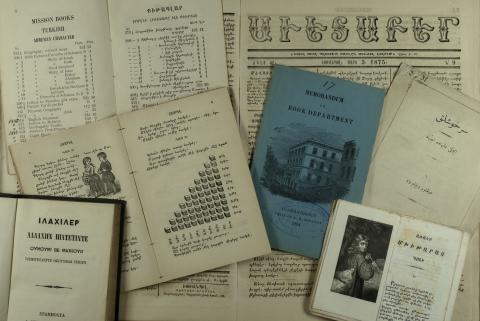Aims and objectives
The National Scientific Library of Georgia (NSL) possesses unique materials collected throughout its history. This project will digitise a part of its collection – the Library-Museum of Joseph Grishashvili. These materials were collected by the Georgian writer and scientist J. Grishashvili (1889-1965) and include rare books, journals & magazines, newspapers, photos, maps, letters, sound recordings in Georgian, Russian, Armenian and other languages, including the first printed publications of Georgia: books (from 1712), and newspapers (from 1840).
This collection contains exceptional materials on the history, ethnography, culture, languages, and politics of the Caucasus region: Georgia, Armenia, Azerbaijan, Eastern Turkey, Iran, Southern Russia. The time range of the collection, from the 18th century until the mid-20th century, covers a period of significant changes. From the period of cultural and political dominance of medieval Iran and Turkey, through the increasing power of Russia, the presence of European countries due to development of the oil business, and ending with Bolshevik revolution, the introduction of new political system and period of ‘developed socialism’.
The collection is often referred as one of the most valuable and full archives in the Caucasus, with many publications not preserved elsewhere. Newspapers, photographs and letters are the most vulnerable, as they are often published using paper, chemicals and inks not intended for long preservation. Unfortunately, preservation conditions at the library have been declining since 1990 due to many reasons. Creating digital copies of the most valuable items will safeguard them for future research and use.
A preliminary amount of materials has been selected for their significance and vulnerability: Georgian and Russian newspapers, Georgian and Russian journals (both from about 1840 till1963), and photographs. It is estimated approximately 21,000 pages will have been scanned by the end of the project. The storage conditions of the original material will also be improved. It is hoped to digitise more in the future, including other parts of the rare collections and sound recordings, and provide copies of digitised texts for the Services for Blind. It is also planned to cooperate with other Georgian heritage institutions: National Library, National Archive, National Centre of Manuscripts, National Agency of Heritage Preservation, and Georgian Church organizations.
Outcomes
The materials collected by the Georgian writer and scientist Joseph Grishashvili (1889-1965) were digitised as part of this project. The most vulnerable part of collection are post cards, photos, letters, theatrical programmes and newspapers. All of these materials are often published using paper, chemicals and inks not intended for a long preservation, that is why the team considered this collection as highly endangered. Books with inscriptions and marginalia were also scanned (57 books in total).




